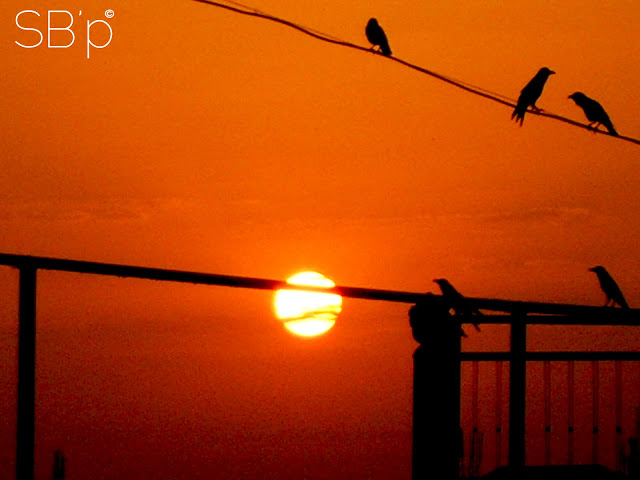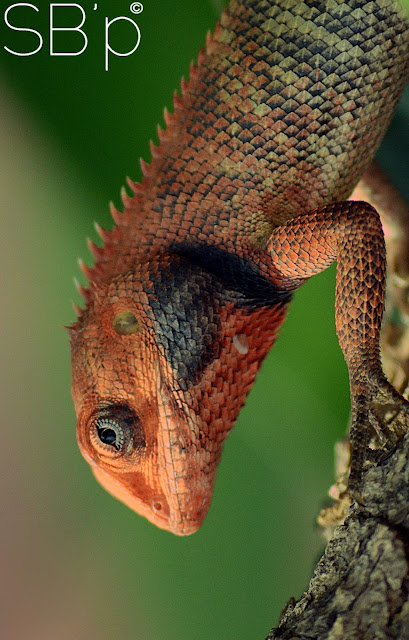Thursday, 13 September 2012
Sunday, 10 June 2012
Sunday, 27 May 2012
Sunday, 20 May 2012
Sunday, 13 May 2012
Monday, 30 April 2012
Tuesday, 24 April 2012
Wednesday, 18 April 2012
The "Zeal"
Children are the future of a nation. For an emerging and developing country like India, development of underprivileged children holds the key to the progress of the nation itself.
Education for underprivileged Children is the key whether we are addressing healthcare, poverty, population control, unemployment or human rights issues.
The educational initiatives for underprivileged children include Crèche [0-3 yrs], Pre-school [3-6 yrs], Non Formal Education [6-14 yrs non-school going], Remedial Education [6-14 yrs school going], Bridge Course [14-18 yrs drop-outs], Functional Literacy [18-45 yrs women] and Family Life Education for adolescent girls. These projects support more than 100 grassroots initiatives working for the education of very poor and underprivileged children in various states of country like Bihar, Orissa, Jharkhand, Uttar Pradesh, Uttarakhand, West Bengal, Assam, Manipur, Andhra Pradesh, Tamil Nadu, Karnataka, Kerala, Chandigarh, Maharashtra, Goa, Gujarat, Rajasthan, Haryana, Madhya Pradesh, Chhattisgarh etc.
Tuesday, 17 April 2012
Wednesday, 11 April 2012
Pichola
Lake Pichola, situated in Udaipur city in the Indian state of Rajasthan, is an artificial fresh water lake, created in the year 1362 AD, named after the nearby Picholi village. It is one of the several contiguous lakes, and developed over the last few centuries in and around the famous Udaipur city. The lakes around Udaipur were primarily created by building dams to meet the drinking water and irrigation needs of the city and its neighborhood. Two islands, Jag Niwas and Jag Mandir are located within Pichola Lake, and have been developed with several palaces to provide views of the lake.
Monday, 27 February 2012
BRTS, Ahmedabad
The Ahmedabad BRTS is a highly ambitious rapid transport system developed by Gujarat Infrastructure Development Board (GIDB) for the city of Ahmedabad, recognizing that no single mode would cater to the mobility needs of the city and that ‘Bus’ forms the most critical segment of the public transport system in the Ahmedabad city. GIDB has thereby entrusted the system design task to CEPT University. A part of first corridor connecting Pirana to R.T.O. was opened to public on October 14, 2009 by Chief Minister of Gujarat Narendra Modi.
Friday, 17 February 2012
Thursday, 16 February 2012
Adalaj step well, Gandhinagar
Adalaj Stepwell is a unique Hindu 'water building' in the village of Adalaj, close to Ahmedabad town in Gandhinagar district in the Indian state of Gujarat. The stepwell was built in 1499 by Muslim king Mohammed Begda for Queen Rani Roopba, wife of Veer Singh, the Vaghela chieftain. The step well or 'Vav', as it is called in Gujarati, is intricately carved and is five stories in depth. Such step wells were once integral to the semi arid regions of Gujarat as they provided basic water needs for drinking, washing and bathing. These wells were also venues for colorful festivals and sacred rituals.
Tuesday, 14 February 2012
Diwali

Diwali (also spelled Devali in certain regions) or Deepavali, popularly known as the "festival of lights," is a festival celebrated between mid-October and mid-December for different reasons. For Hindus, Diwali is one of the most important festivals of the year and is celebrated in families by performing traditional activities together in their homes. For Jains, Diwali marks the attainment of moksha or nirvana by Mahavira in 527 BCE.
Diwali is an official holiday in India, Nepal, Sri Lanka, Myanmar, Mauritius, Guyana, Trinidad & Tobago, Suriname, Malaysia, Singapore, and Fiji.
The name "Diwali" is a contraction of "Deepavali" (Sanskrit: दीपावली Dīpāvalī), which translates into "row of lamps". Diwali involves the lighting of small clay lamps (diyas or dīpas) in Sanskrit: दीप) filled with oil to signify the triumph of good over evil. These lamps are kept on during the night and one's house is cleaned, both done in order to make the goddess Lakshmi feel welcome. Firecrackers are burst in order to drive away evil spirits. During Diwali, all the celebrants wear new clothes and share sweets and snacks with family members and friends.
The festival starts with Dhanteras on which most Indian business communities begin their financial year. The second day of the festival, Naraka Chaturdasi, marks the vanquishing of the demon Naraka by Lord Krishna and his wife Satyabhama. Amavasya, the third day of Diwali, marks the worship of Lakshmi, the goddess of wealth in her most benevolent mood, fulfilling the wishes of her devotees. Amavasya also tells the story of Lord Vishnu, who in his dwarf incarnation vanquished the Bali, and banished him to Patala. It is on the fourth day of Diwali, Kartika Shudda Padyami, that Bali went to patala and took the reins of his new kingdom in there. The fifth day is referred to as Yama Dvitiya (also called Bhai Dooj), and on this day sisters invite their brothers to their homes.
Monday, 13 February 2012
Gurudongmar Lake, Sikkim
Gurudongmar Lake or Gurudogmar Lake is one of the highest lakes in the world, located at an altitude of 17,100 ft (5,210 m). It lies in the province of North Sikkim, India, only some 5 kilometres (3.1 mi) south of Chinese border. For a visit to the lake, tourists need to secure a permit in advance from the Indian Army. Most tourists who make it to the lake show slight signs of altitude sickness.
Saturday, 11 February 2012
Char Minar, Hyderabad
Sultan Muhammad Quli Qutb Shah, the fifth ruler of the Qutb Shahi dynasty built Charminar in 1591 AD, shortly after he had shifted his capital from Golkonda to what is now known as Hyderabad. He built this famous structure to commemorate the elimination of a plague epidemic from this city. He is said to have prayed for the end of a plague that was ravaging his city and vowed to build a masjid(Islamic mosque) at the very place where he was praying. In 1591 while laying the foundation of Charminar, Quli Qutb Shah prayed: "Oh Allah, bestow unto this city peace and prosperity. Let millions of men of all castes, creeds and religions make it their abode, like fish in the water."
Chameleon
Chameleons (family Chamaeleonidae) are a distinctive and highly specialized clade of lizards. They are distinguished by their parrot-like zygodactylous feet, their separately mobile and stereoscopic eyes, their very long, highly modified, and rapidly extrudable tongues, their swaying gait, the possession by many of a prehensile tail, crests or horns on their distinctively shaped heads, and the ability of some to change color. Uniquely adapted for climbing and visual hunting, the approximately 160 species of chameleon range from Africa, Madagascar, Spain and Portugal, across south Asia, to Sri Lanka, have been introduced to Hawaii,California and Florida, and are found in warm habitats that vary from rain forest to desert conditions. Chameleons are often kept as household pets.
The Moon
The Moon is the only celestial body on which humans have landed. While the Soviet Union's Luna programme was the first to reach the Moon with unmanned spacecraft in 1959, the United States' NASA Apollo program achieved the only manned missions to date, beginning with the first manned lunar orbiting mission by Apollo 8 in 1968, and six manned lunar landings between 1969 and 1972—the first being Apollo 11. These missions returned over 380 kg of lunar rocks, which have been used to develop a detailed geological understanding of the Moon's origins (it is thought to have formed some 4.5 billion years ago in a giant impact event involving Earth), the formation of its internal structure, and its subsequent history.
Dragonfly
A dragonfly is a winged insect belonging to the order Odonata, the suborder Epiprocta or, in the strict sense, the infraorder Anisoptera. It is characterized by large multifaceted eyes, two pairs of strong transparent wings, and an elongated body. Dragonflies are similar to damselflies, but the adults can be differentiated by the fact that the wings of most dragonflies are held away from, and perpendicular to, the body when at rest. Dragonflies possess six legs (like any other insect), but most of them cannot walk well. Dragonflies are some of the fastest insects in the world.
Friday, 10 February 2012
The Sidi Saiyad Jali, Ahmedabad
The Sidi Saiyad Mosque was built in the last year of the existence of Sultanate of Gujarat. The mosque is entirely arcuated and is famous for beautifully carved ten stone latticework windows (jalis) on the side and rear arches. The rear wall is filled with square stone pierced panels in geometrical designs. The two bays flanking the central aisle have reticulated stone slabs carved in designs of intertwined trees and foliage and a palm motif. This intricately carved stone window is the Siddi Sayyed Jali, the unofficial symbol of city of Ahmedabad and the inspiration for the design of the logo of the Indian Institute of Management Ahmedabad. This mosque is extremely strong as since it is made of stones and in stones after many years it goes back to the ground and they by day it becomes much more stronger.
Uttarayan (Makar Sakranti), India
Uttarayana is the day when the sun starts to travel towards north as a sign of coming summer. People fly kites from their rooftops in celebration of the festival.To this day also there is a special appearance of Gujrat Government in this festival well known as Vibrant Gujarat Kite festival.
Uttarayan (known as Makar Sakranti in other parts of India) is the day when the sun starts to travel northwards marking the decline of winter. The days become longer, the skies clearer and the breeze cooler. A feeling of anticipation, joy and jubilation grips all who celebrate the occasion of thanksgiving and merry-making.
Kankaria Lake, Ahmedabad
Kankaria is the biggest lake in Ahmedabad (in earliar days it used to be known by the name "Qutub Hojj" or "Hauj-e-Kutub"). Many kings, or badshahs, used to bathe in this lake. With an approximate circumference of 1.4 miles (2.3 km), it represents the regale history of Ahmedabad. It is located in the southern part of the city in Maninagar area, which is the most densely populated suburb of the city.
Rumtek Monastery, Gangtok
Originally built by the 9th Karmapa Wangchuk Dorje in 16th century, at the same time as Phodong Monastery and Ralang Monastery, Rumtek served as the main seat of the Karma Kagyu lineage in Sikkim for some time. But when the 16th Karmapa arrived in Sikkim in 1959, after fleeing Tibet, the monastery was in ruins. Despite being offered other sites, the Karmapa decided to rebuild Rumtek. To him, the site possessed many auspicious qualities and was surrounded by the most favorable attributes.
Subscribe to:
Posts (Atom)








































